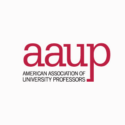 According to a new study from the Pew Research Center, the overall number of undergraduates at U.S. colleges and universities has increased dramatically over the past 20 years, with growth fueled almost exclusively by students from low-income families and students of color. However, these changes have not occurred uniformly across higher education institutions, with increases most pronounced in public two-year colleges and the least selective public four-year institutions.
According to a new study from the Pew Research Center, the overall number of undergraduates at U.S. colleges and universities has increased dramatically over the past 20 years, with growth fueled almost exclusively by students from low-income families and students of color. However, these changes have not occurred uniformly across higher education institutions, with increases most pronounced in public two-year colleges and the least selective public four-year institutions.
For their study, the researchers examined data from the National Center for Education Statistics and compared enrollment levels at all levels of higher education in 1996 and with data from 2016. Over the past 20 years, undergraduate enrollment as increased from 16.7 million students in 1995-1996 to about 20 million students in 2015-2016. The results found that the percentage of non-White students rose from 29 percent in 1996 to 47 percent in 2016.
Across all levels of postsecondary education, Black, Hispanic, Asian, and other minority student enrollment has increased, while White student enrollment has decreased. Black student enrollment has increased from 10 percent to 13 percent at public four-year institutions, from 13 percent to 14 percent at private, nonprofit four-year institutions, from 13 percent to 15 percent at public two-year institutions, and from 21 percent to 28 percent at private for-profit schools. Additionally, minority student enrollment has grown the least at very selective and moderately selective four-year institutions.
Although decreases in White student enrollment have been seen at all levels of higher education, they still remain the majority at public and private nonprofit four-year schools. At public two-year schools, white student enrollment and non-White student enrollment are equal at 50 percent respectively. At private, for-profit schools, White students are actually the minority, representing 42 percent of enrollment, compared to non-White students who represent 58 percent.
The full study, “A Rising Share of Undergraduates Are From Poor Families, Especially at Less Selective Colleges,” may be accessed here.










The question I have is: Have colleges and universities modified their instructional methods to address the expanded student population. Are textbooks easier to understand? Are tutorials and labs emphasized instead of large-class lectures.
Universities can be bewildering experiences for even the brightest students. Let’s hope professors understand their responsibility to teach their students. Not just expose them to textbooks and reading lists.
How does this Pew report correlate with last year’s data from the Department of Education, which reported a decline in African American college enrollments? https://jbhe.com/2018/06/the-downward-spiral-of-african-american-enrollments-in-higher-education/